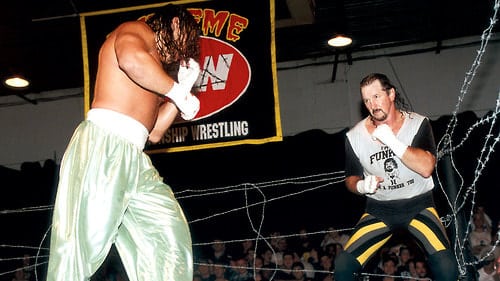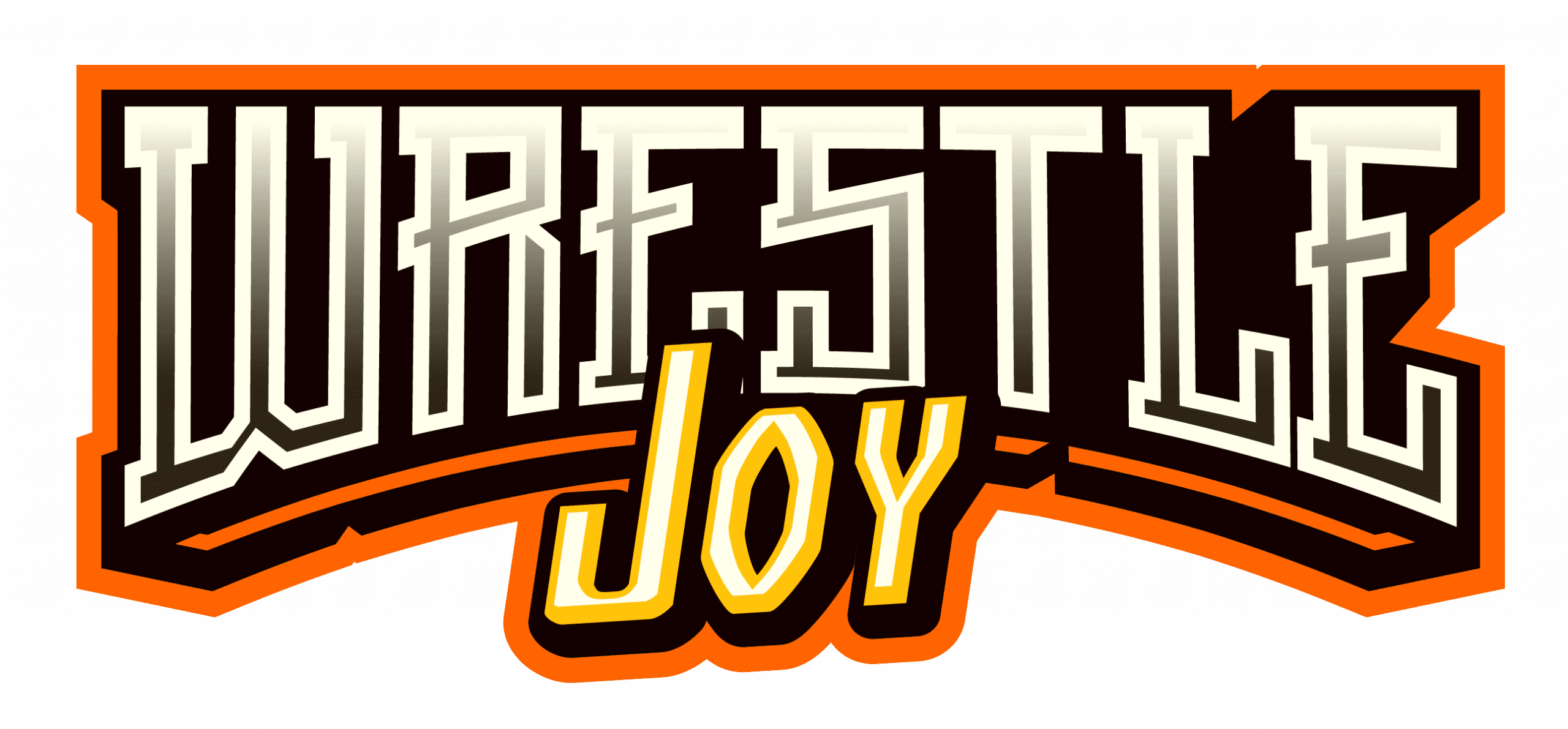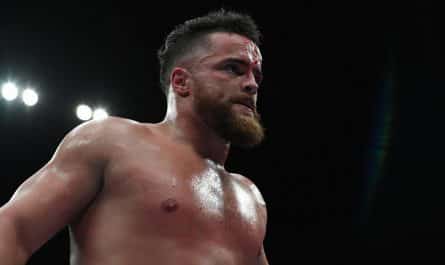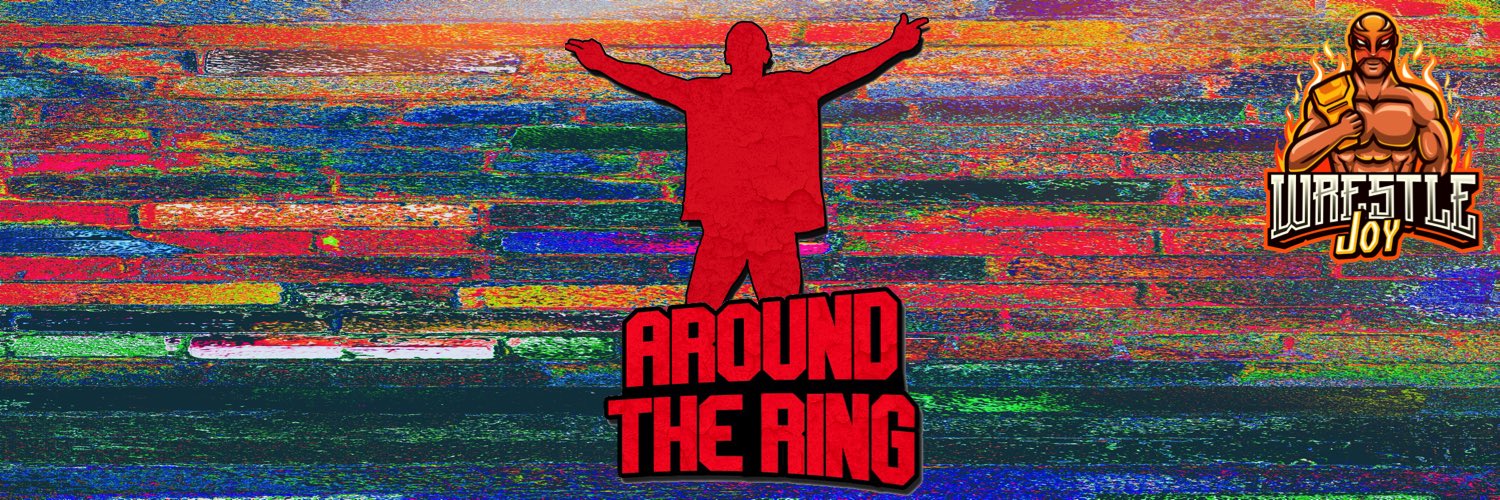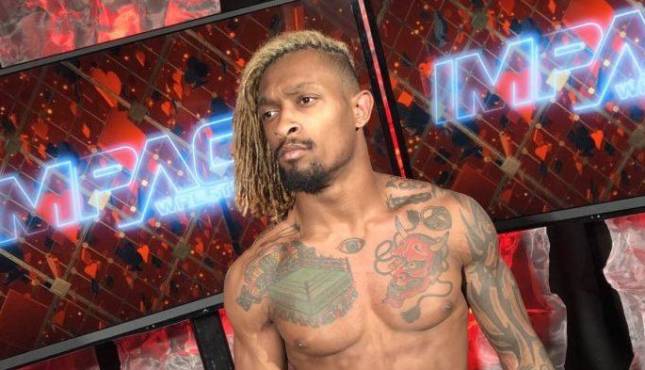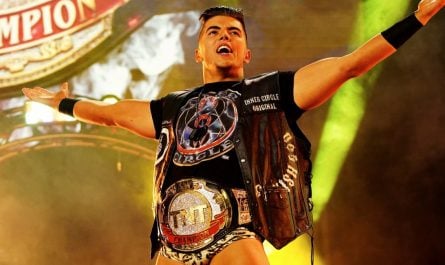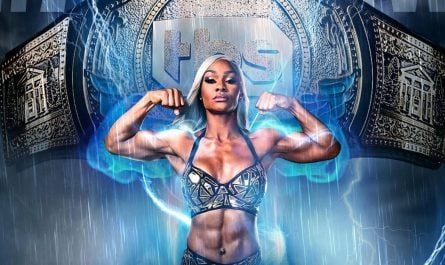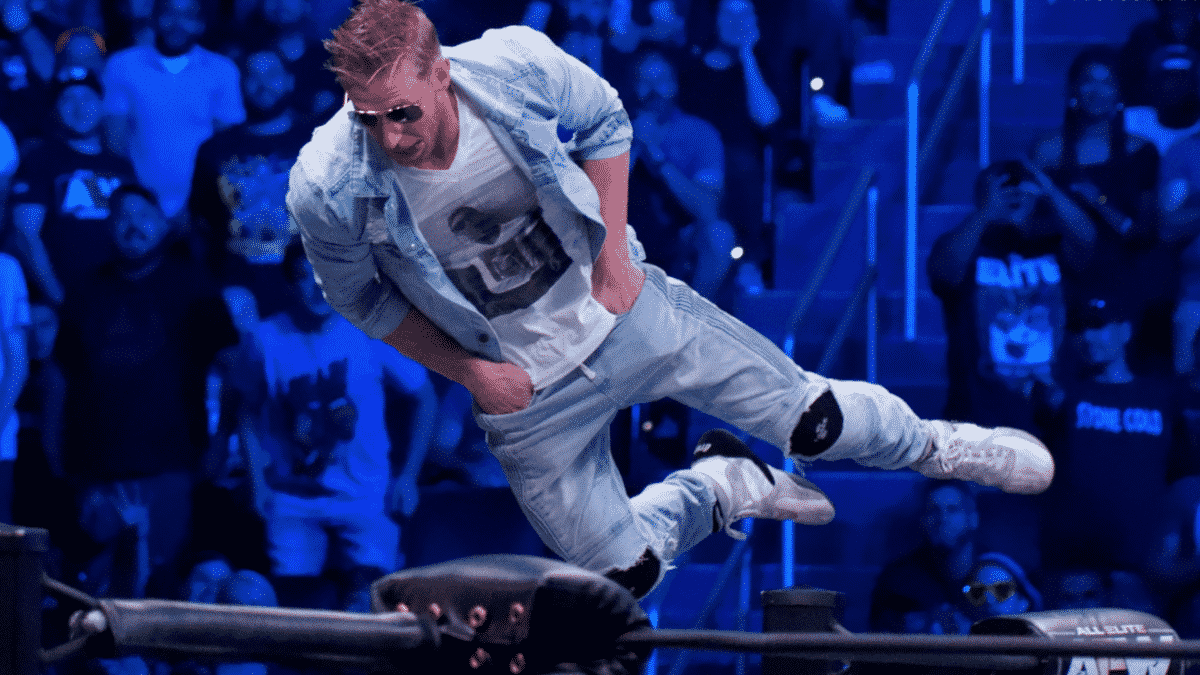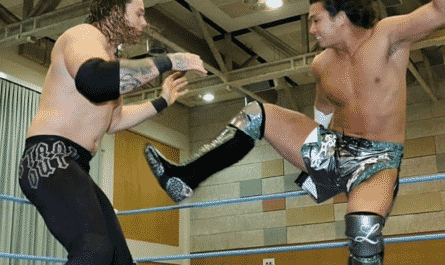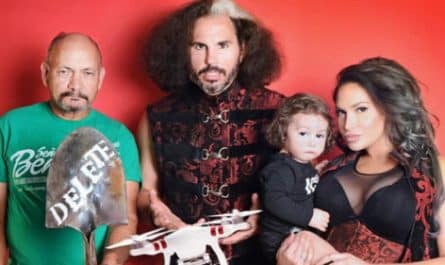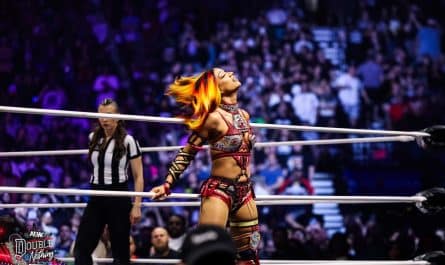A small bingo hall. A packed crowd of rabid, blood thirsty fans, and wrestling that was ahead its time. In the 1990s, no promotion shocked the world like Extreme Championship Wrestling. ECW was not only responsible for some of the wildest moments in wrestling history, but some of the most innovative wrestling ever seen. During its nine year run, ECW revolutionized the industry with its gritty style and reality based storytelling, and its influence is felt even now.
Known for bloody, hardcore matches, it also showcased various international styles like Puroresu and Lucha Libre and was a launching pad for stars who would become some of the industry’s biggest names. For an industry where things were growing stale at the time, ECW was like a shot of adrenaline straight to the heart. The company would ultimately have to fold for a multitude of reasons but made a mark that can still be seen today. It’s the crazy Cinderella story of a small promotion that somehow managed to change the face of professional wrestling.
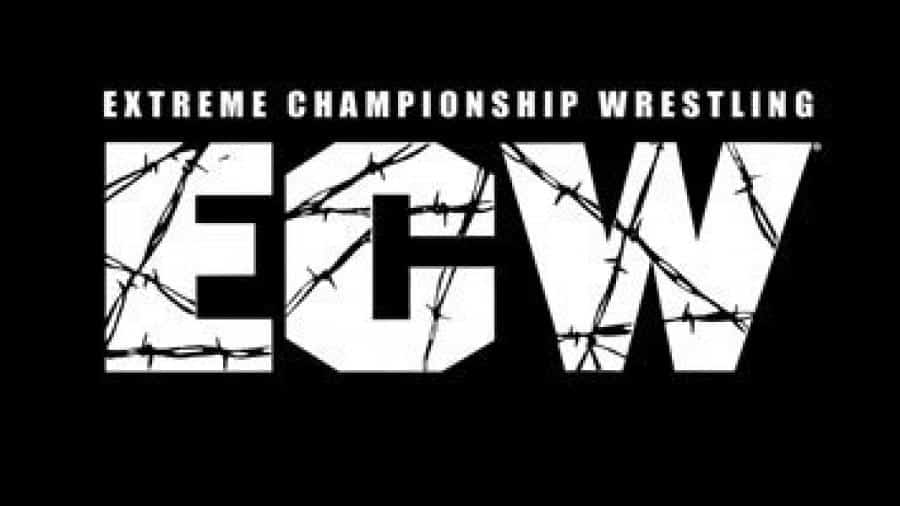
The story of Extreme Championship Wrestling began in the ‘city of brotherly love’ – Philadelphia, Pennsylvania. It’s no secret that Philadelphia has some of the most demanding and merciless sports fans around. In fact, they could be downright brutal at times, and its wrestling fans were no different. Throughout ECW’s run, those fans would become one of the most important elements of its product. They were the heart of ECW’s fanbase, and their knowledgeability would lead to the term ‘smart mark’ being coined. This had a lot to do with ECW being one of the first wrestling promotions to utilize the internet during the era of tape trading.
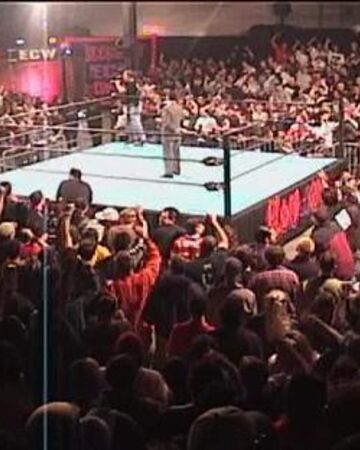
Originally known as Eastern Championship Wrestling, ECW began in 1990 under the banner of the Tri State Wrestling Alliance, owned by promoter Joel Goodhart. In 1992, Goodhart sold his share of the company to his partner Tod Gordon, and it was renamed Eastern Championship Wrestling. ECW was not was not a member of the National Wrestling Alliance at the time that it was founded. Although it would also continue to use the former Tri-State Heavyweight Championship belt to represent its own championship, the ECW championship is not considered a continuation of that title.
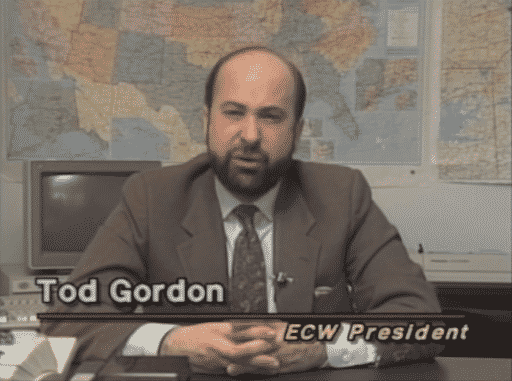
In April of 1993, ‘Hot Stuff’ Eddie Gilbert was able to secure television time on Sports Channel Philadelphia. Later that year, Gilbert was replaced by Paul Heyman in September. Fans knew Heyman as Paul E. Dangerously from World Championship Wrestling. He’d just been fired by WCW at the time and was on the hunt for his next challenge. Throughout the company’s run, Heyman would put everything he had into ECW as would founder, Tod Gordon.

Announcer and play by play man, Joey Styles, was another crucial addition to the team. His work with Extreme Championship would ultimately make him one of the most respected names in his field. Fans still remember his signature cry of ‘Oh my God!’.
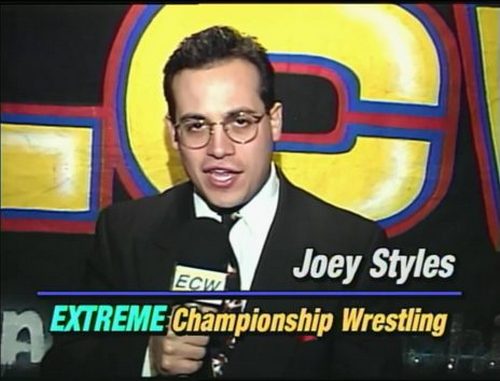
By 1994, it was time for ECW to make its first major move. That year, Jim Crockett’s no-compete agreement with Ted Turner was up, and Crockett decided to start promoting with the NWA again. Not long after, Crockett approached Tod Gordon about holding a tournament for the NWA World Heavyweight Championship in Philadelphia on August 27, 1994. For some time, the NWA’s president, Dennis Coralluzzo, had alleged that Crockett and Gordon were going to monopolize the title. Crockett had in fact done something like this back in the 80s. Coralluzzo also stated that Crockett did not have the approval of the NWA’s board of directors. This resulted in him personally overseeing the tournament.
Tod Gordon really took offense to Coralluzzo’s power plays and began putting together a plan for ECW to publicly break away from the National Wrestling Alliance in a way that would get attention for the company and insult the NWA. That plan would see ‘The Franchise’ Shane Douglas pin 2 Cold Scorpio to win the NWA World Heavyweight Championship belt at the tournament final, before throwing it down in an emphatic act of defiance. There was a lot of animosity between Douglas and Coralluzzo, which was a major factor in Douglas choosing to go through with the plan. The NWA president had been publicly criticizing Douglas and believed he was a bad risk who would tend to no-show events. Coralluzzo even went as far as telling NWA affiliated bookers to not book Douglas.
The night of the tournament finals, Shane Douglas shocked the entire industry when he threw down the NWA World Heavyweight Championship belt and cut one of the most memorable double crosses in wrestling history. In it, he referenced some of the NWA’s greatest champions as he thought of his late father’s motto of ‘Do right by those who do right by you’. Before throwing the belt down, Douglas looked up and said “This is it tonight, Dad.” He then stated that he didn’t want to be the champion of an organization that essentially died seven years earlier.
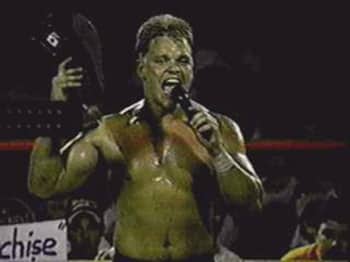
Afterward, he raised the Eastern Championship Wrestling title and declared it the Extreme Championship Wrestling World Heavyweight Championship. Coralluzzo was livid, calling Douglas’ actions a disgrace and saying that Douglas would be the NWA Champion whether he wanted to or not. He also stated that he would move to have Shane Douglas stripped of both titles, calling the wrestler undeserving.
On the next edition of NWA-ECW programming, Tod Gordon made a statement to announce the folding of NWA – Eastern Championship wrestling as well as its rebranding as Extreme Championship Wrestling. In the statement, Gordon also declared that ‘The Franchise’ Shane Douglas would be recognized as its World Heavyweight Champion and encouraged any wrestler who wanted to, to challenge for that title. From there, ECW would cut all ties with the National Wrestling Alliance and go on to become a cult sensation. Shane Douglas would become one of the promotion’s biggest stars and play an integral role in ECW.
The bulk of ECW’s shows remained at the ECW arena, a former freight warehouse turned bingo hall on the corner of Swanson and Ritner streets. The ECW arena would become as much a part of the company’s history as its fans. Some of them like John ‘Hat Guy’ Bailey even helped out at the ECW arena, setting up chairs and taking tickets at the door. As demanding and blunt as they were, ECW fans were also some of the most loyal and passionate, and for those in Philadelphia, the ECW arena was their home.
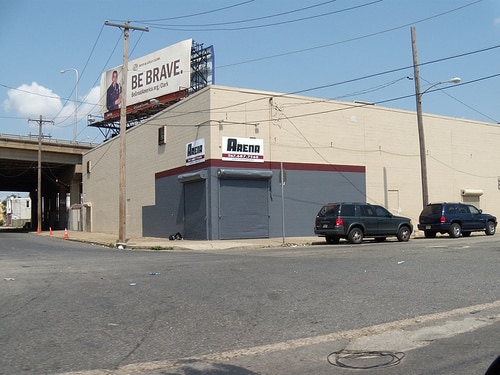
Another thing that set Extreme Championship Wrestling apart from other promotions was its talent. From the hardcore icon the Sandman, to the heart and soul of ECW, Tommy Dreamer, to the suicidal, homicidal, genocidal, death defying Sabu, ECW had one of the industry’s most unique and diverse rosters at the time.
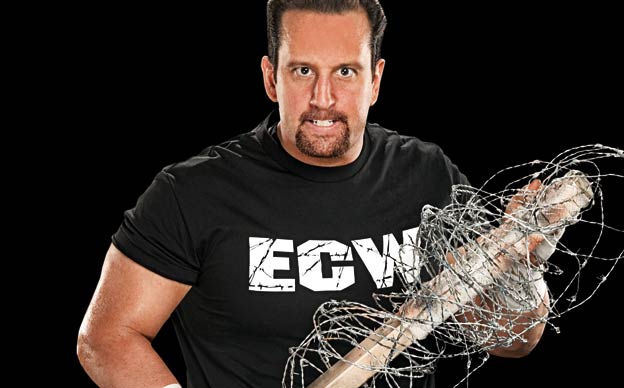
Other stars like Taz, Rob Van Dam, and New Jack were also huge attractions for the company. One of the biggest contributors to ECW’s success was Raven, one of wrestling’s best storytellers and the mind behind many of ECW’s most memorable moments and rivalries. Wrestling legend Terry Funk was also instrumental in the rise of ECW. The three way dance between him, Shane Douglas, and Sabu is one of ECW’s most fondly remembered matches. Funk also did a lot to build up the promotion’s younger talent.
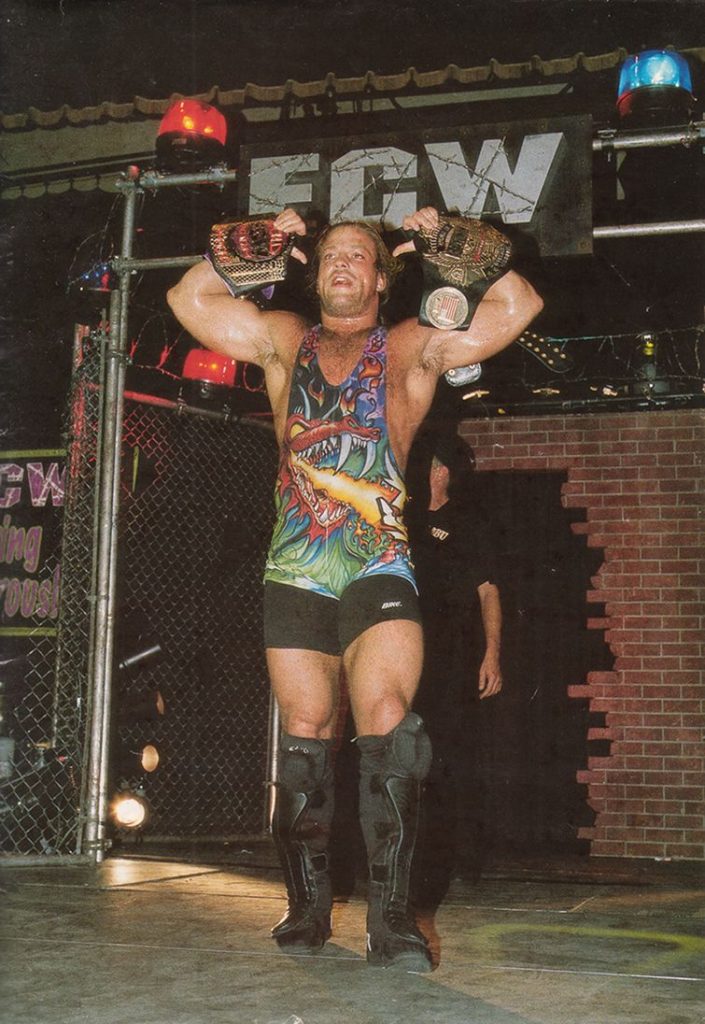
The promotion would have perhaps its biggest surprise success stories in the form of Mikey Whipwreck, a hungry, young rookie who earned the respect of fans through his ability to take a tremendous beating.
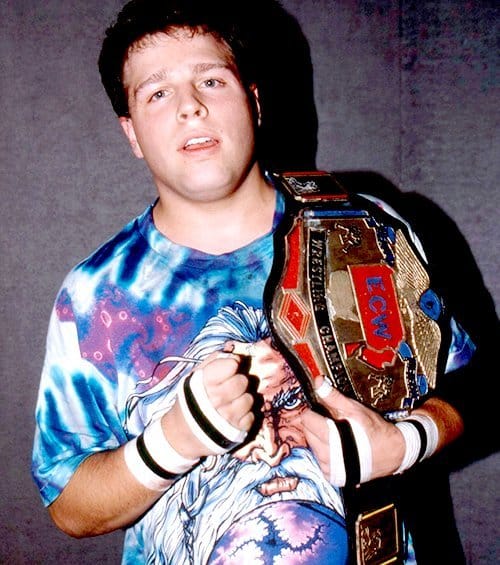
Former WCW wrestlers Mick Foley and Steve Austin also made their way to Extreme Championship Wrestling prior to their runs with WWE. Brian Pillman also appeared in ECW and had a heated rivalry with Shane Douglas. Pillman mercilessly antagonized Douglas and fans, laying the groundwork for his future ‘loose cannon’ persona. Foley and Austin also showed the beginnings of what would be seen of them in the future.
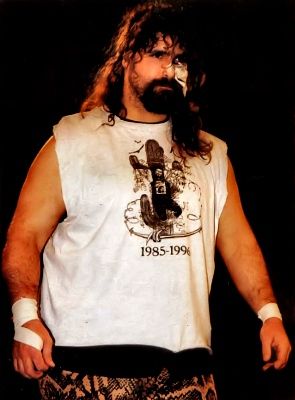
ECW also had an array of popular tag teams like the Bad Breed, the Public Enemy, the Dudleys, the Eliminators, and the Gangstas. The Public Enemy became one of the promotion’s most beloved teams. The Dudleys would go on to become one of the most decorated tag teams in the entire industry, winning championship gold in both WWE and IMPACT Wrestling.
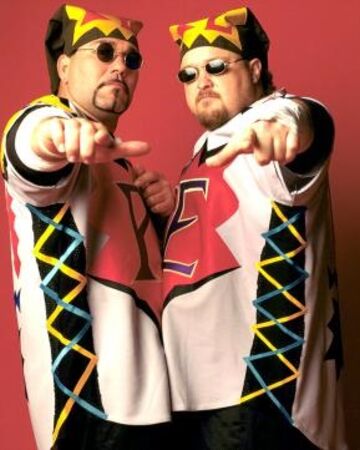
Many of WCW’s best cruiserweights came from ECW. Rey Mysterio, Psicosis, and Juventud Guerrera were all introduced to fans in the US through their appearances in Extreme Championship Wrestling. Chris Benoit, Eddie Guerrero, and Dean Malenko put on some of the company’s best matches and brought an important amount of legitimacy to ECW’s overall product.
Whenever a little comic relief was needed, the Blue World Order was always there to provide it. A hilarious parody of the NWO, Stevie Richards, the Blue Meanie, and Nova were responsible for many of ECW’s funniest moments. The fans absolutely loved them and would often chant for the BWO at shows.
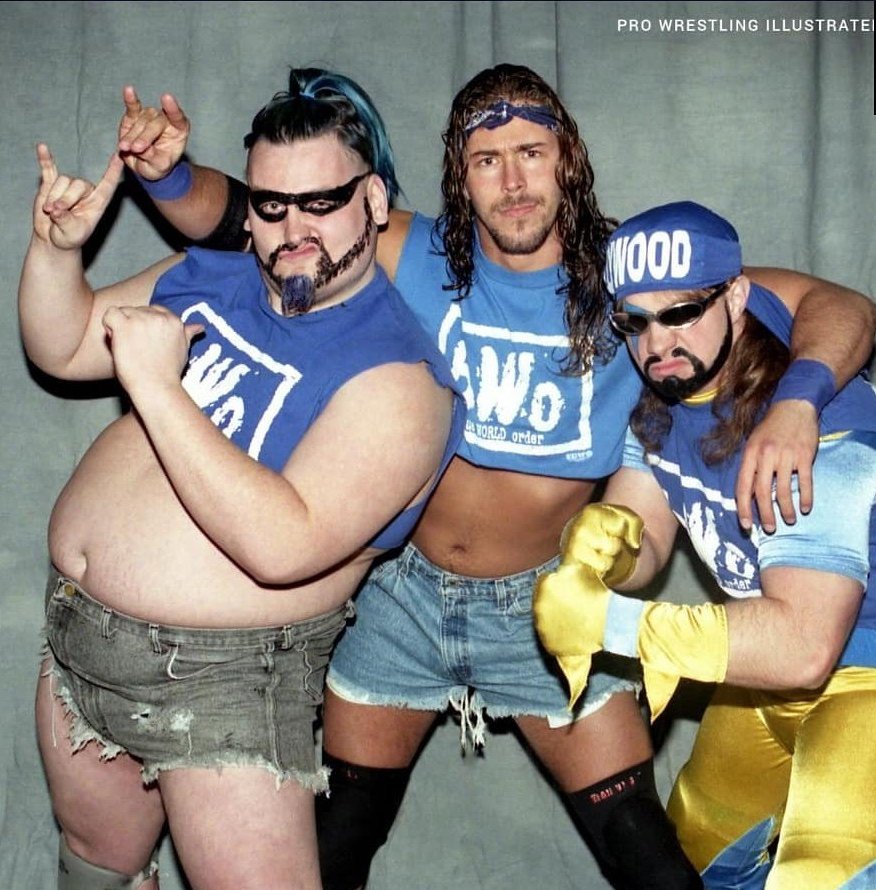
In ECW, many of the wrestlers did more than just compete in the ring. Stevie Richards would often take T-shirt orders over the phone. Taz designed quite a bit of the promotion’s merchandise. Taz was also considered one of ECW’s most loyal performers. When Mike Awesome left to go to WCW while still ECW World Heavyweight Champion, Taz made a temporary return while under contract to WWE to help take the title off him. Tommy Dreamer often helped manage the merchandise stand, and Bubby Ray Dudley helped make arrangements with the venues where ECW ran shows.
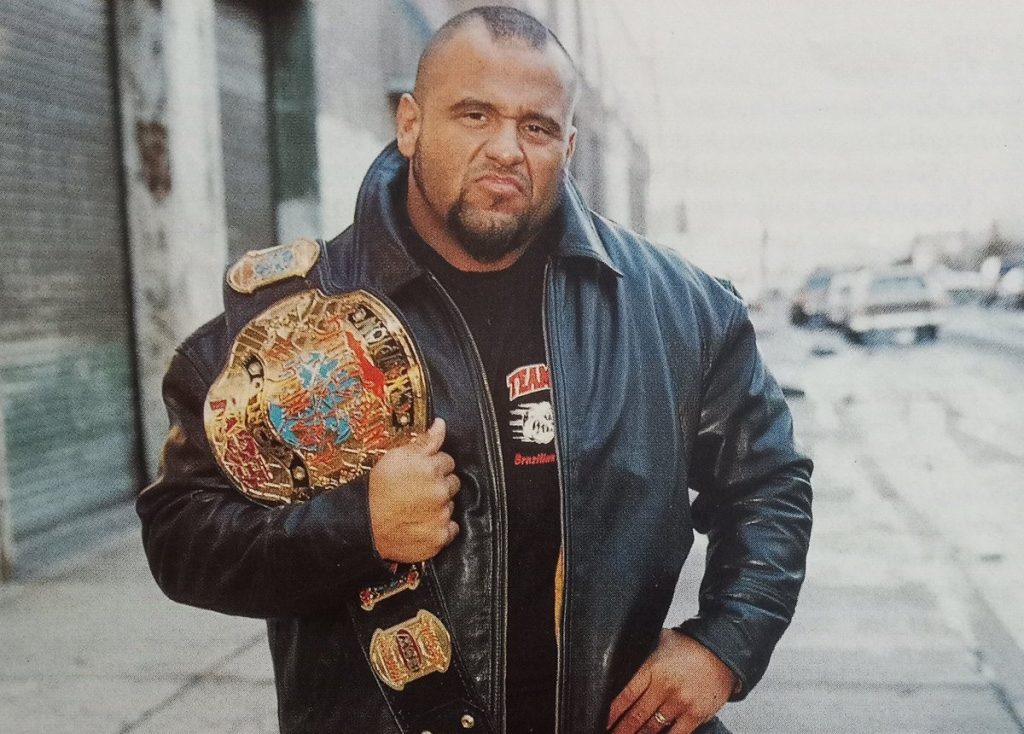
By 1995, ECW had become a massive hit with fans. They loved the gritty, no holds barred presentation and violent, hard hitting matches. ECW was able to get away with a lot due to lack of FCC oversight and the obscurity of the stations it aired on. Their show featured blood, violence, and adult language. They also used copyrighted music for wrestler entrances. Music videos were also a big part of ECW’s production. Over the years, the company would also find itself at the center of more than its just fair share of controversy due to its content and shocking incidents that are still remembered today.
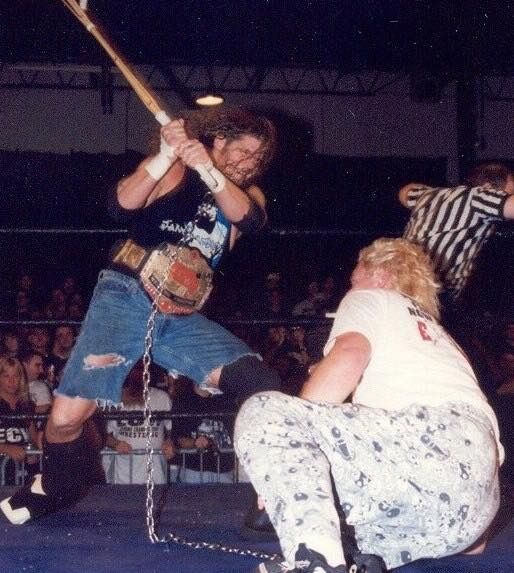
Raven was at the center of some of ECW’s most controversial moments, including the time he crucified the Sandman in the ECW arena. Some of the company’s best creations also came from Raven, like the BWO and the Dudleys. The Dudleys started out as a large faction inspired by the Hanson brothers from the movie ‘Slapshot’ and became one of American wrestling’s most decorated tag teams.
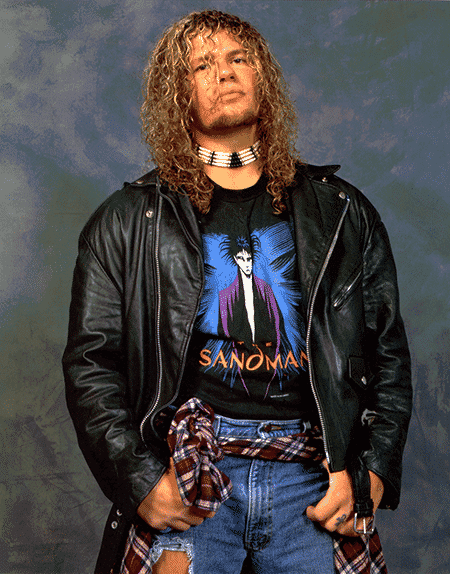
While Raven was incredibly controversial at times, no wrestler was as infamous as New Jack who shocked the wrestling world in a way that few ever could. From intentionally cutting another wrestler (who no one realized was underage at the time) to throwing another wrestler from a scaffold suspended high above the ring, New Jack’s actions in ECW are still talked about today.
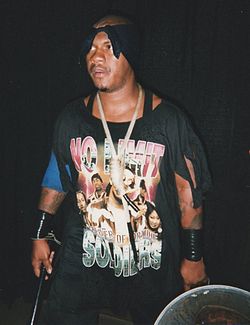
Heading into the late 1990s, ECW was gaining big momentum that even included a successful co-promotional storyline with WWE in 1997, and their first pay-per-view, Barely Legal, that same year. By 1999, the company also had a deal with TNN to air on national TV. That deal would ultimately become a double-edged sword for ECW, as TNN wanted them to mirror WWE’s production value when they didn’t have the financial horsepower behind them to do it. ECW also felt like they were being used by TNN to test out how wrestling would do on their network before offering a much bigger deal to WWE. TNN also did very little to promote ECW, despite it being their highest rated program. This angered the company’s biggest proponent and owner, Paul Heyman.
Those issues, along with mounting financial problems, would ultimately bring about ECW’s demise. They struggled for months together to find another deal but couldn’t find one in time and the company closed on April 4, 2001. There would be a relaunch through WWE in 2006 that would last four years. There would also be smaller reunions and documentaries chronicling ECW’s history and legacy.
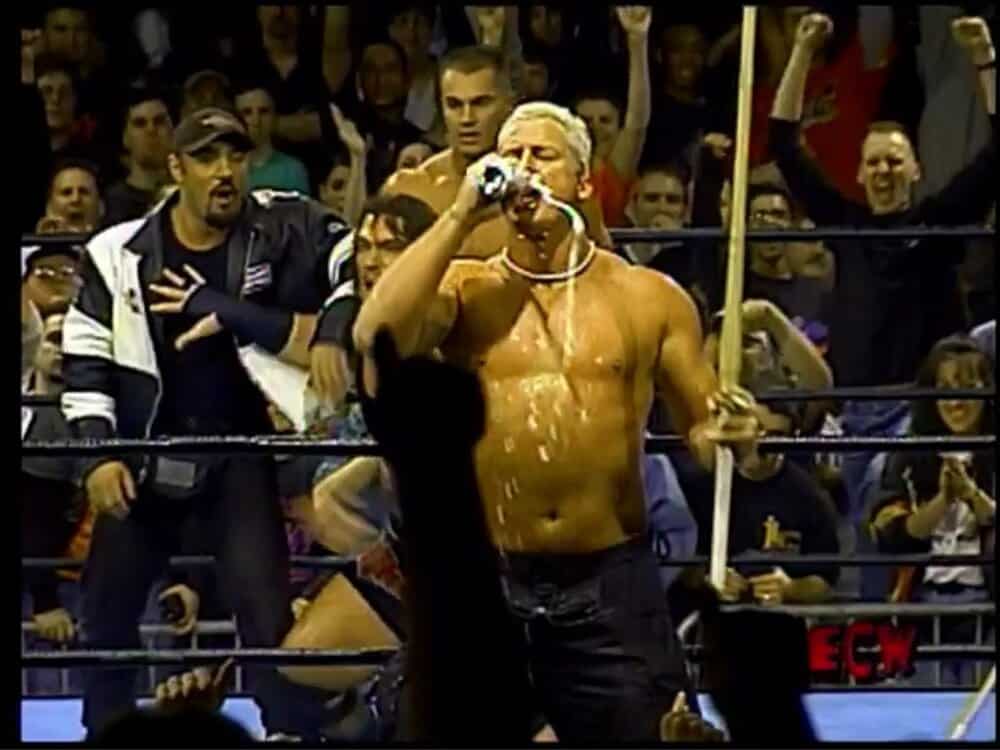
ECW’s legacy is a very compelling one. They were the small promotion that changed the wrestling world in their own unique way. Without ECW, there wouldn’t have been the Attitude Era in WWE. They helped lay the foundation for a lot of wrestling right now. Probably the most inspiring thing about the story of ECW, is the message that even those presumed to be the least among us can find success on their own terms. Extreme Championship Wrestling was in many ways the proverbial island of misfit toys. They were far from typical and did things their own way. They were a land of outlaws. They were the land of extreme.
